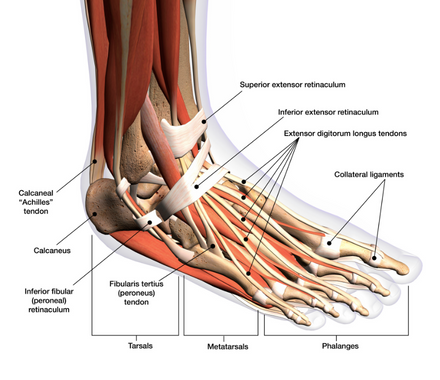Calcaneus Fracture (A Broken Heel Bone)
.
Calcaneus Anatomy
The calcaneus, or heel bone, is the largest of the seven tarsal bones in the foot. It is located at the back of foot below the ankle.
What Is A Calcaneus Fracture?
A Calcaneus Fracture is when a break in the heel bone occurs. They are a devastating injury that tends to affect young and healthy individuals. This injury is one that is limb threatening and lifestyle altering
How Do They Occur
These fractures tend to occur with falls from a significant height or motor vehicle accidents. An X-ray of a calcaneus fracture can reveal the extent of the damage and help guide treatment options. The calcaneus can be thought of as an eggshell that shatters when subjected to significant force.
Calcaneus Fracture Classification
Calcaneal fractures are classified according to the Sanders classification 1-4 with 4 being the most severe. Some scientific articles have gone so far as to call for primary joint fusion for a type four fracture due to the dismal outcomes with open reduction and internal fixation of the fracture. Some studies have also called for benign neglect of these fractures due to poor outcomes in certain patient populations.
Risks and Complications
One of the complications with these fractures is that the entire dorsal, or top surface of the bone, has a complex and undulating articulating joint surface that allows the foot and ankle to go side to side and accommodate for uneven terrain. If this joint surface is disrupted, the risk is that there will be limitations in motion, which will affect function. Additionally, if the joint is more than 1 or 2 millimeters out of position substantial posttraumatic arthritis can develop which will lead to lifelong pain and loss of function.
The articular surface of the calcaneus is divided into 3 facets that articulate with the talus. It is well known that any fracture through an articular surface can lead to fissuring of the articular cartilage/joint surface and cause a release of toxic enzymes that will kill healthy joint cells. This will lead to the development of arthritis and pain.
Treatment Options
Traditionally calcaneus fractures were treated in an open fashion with large incisions, frequent wound healing, and infectious complications. Recently, minimally invasive techniques have emerged that seem to decrease wound healing and infections but are much more challenging to obtain an accurate reduction of the fracture.
Life After A Calcaneus Fracture
Discover Robert's Story
Our patient sustained a very bad type 4 fracture that was treated with a minimally invasive surgical approach. Most patients with this injury have almost complete loss of motion which our patient retained (see video); and he is currently able to play golf and ride a motorcycle which most patients with these injuries are unable to do. To be able to pivot and turn and walk on uneven surfaces of a golf course are unimaginable for most patients that have suffered a calcaneal fracture as is the ability to support the weight of a Harley.
Calcaneus Fracture Treatment in Central New Jersey and Jersey Shore
Calcaneus fracture repairs often involve advanced orthopedic techniques in order to to prevent chances of a refracture. To mitigate this risk, our team of foot and ankle specialists at Seaview Orthopaedics design a high-quality specialized foot and ankle treatment plan aimed to get you back on your feet in no time. If you think you may have a calcaneus fracture, schedule an appointment today at one of our six orthopedic clinics throughout NJ.


